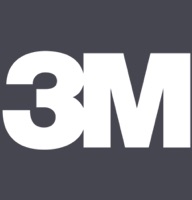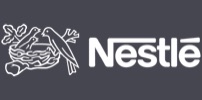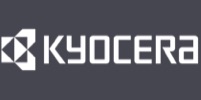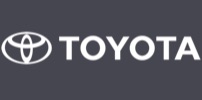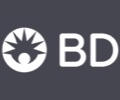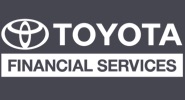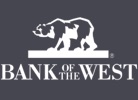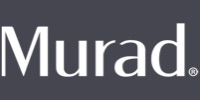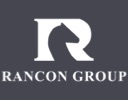As enterprises across the world gear up for cloud-powered future, managing cloud adoption through remote infrastructure has become a top business priority in the run-up to 2020 and beyond. Here are 7 key trends that will transform the technology landscape of companies across the world:
–The global cloud computing market is forecast to go over $200 billion in 2019
–Cloud initiatives are expected to account for 70% of all tech spending by 2020
–About 80% of organizations are predicted to migrate toward the cloud by 2025
–As many as 84% of enterprises run on a multi-cloud strategy
–Last year alone, in 2018, public cloud adoption grew to 92%
-IaaS is expected to reach $72.4 billion worldwide by 2020
–Serverless is the fastest growing extended cloud service with a 50% market share in 2018
–(Source: Hosting Tribunal)
What is a Cloud?
Speaking in CIO.com magazine, Michael Tavares, research analyst at tech market analysis firm ABI Research notes: “A cloud architecture is a holistic structure that depends on symbiotic relationships formed between individual components, including front- and back-end platforms, a cloud-based delivery system and network resources”, “If each of these components is lacking, we do not have a cloud architecture,” he says. “More importantly, a change in one component will result in changes in other components.”
So, why is Cloud so popular? For a start, cloud services enable both users and enterprises to run software without installing it. Cloud offers enterprises stability, redundancy and most importantly, security. It eliminates the problem of buying and maintaining hardware and gives us the opportunity to access content from basically anywhere.
Building the Perfect Cloud
A well architected cloud meets and exceeds the expectations and needs of its business stakeholders. The cloud architecture should be carefully designed by evaluation and analysis of the various cloud platforms and deployment models. It should be accompanied by the ability to dynamically acquire computing resources to meet demand for existing and new workloads.
In ideal cloud state, applications will perform correctly and efficiently. Workloads and peak loads will be properly determined with ongoing performance monitoring. Alerts to any disruption will be proactively timed, with planned and practiced recovery from service disruptions. Security risk assessments and mitigation strategies will be designed and implemented to protect information, systems, and assets–while not disrupting processes for users, stakeholders or customers. So, here are our 5 recommendations to achieve a Well-architected Cloud:
Begin with the End State in Mind
The best way to achieve a well-architected cloud solution is through planning and foresight, advises Kyle Brown, an IBM Fellow and cloud architecture CTO for Cloud Labs. Begin by taking your inhouse capabilities into account. Decide which capabilities you will outsource. When considering Cloud, do not limit your options. Ascertain your team’s ability for expertise for cloud readiness assessments, cloud platform assessment, transition roadmaps, migration. If SaaS applications become part of your strategy, then plan for Implementation, Data Migration and Functional Help Desk.
Know Your Customer
Involve key stakeholders, including business, development, and operations teams, when determining where to focus operations efforts on your internal and external customer needs. This will ensure that you have a thorough understanding of the operations support that is required to achieve business outcomes.
Consider your Business & Operational Realities
When defining a well architected cloud, it becomes very important to choose workloads which improve the current state of business operations during the process of the architectural evaluation. Always be cautious when the project is defined as a go to the Cloud “lift and shift”, in this case invest special attention to the end state and it should be acceptable to your business users and other stakeholders. You should be cognizant of any customization, extensions, modifications, multiple language, or integrations to multiple applications, this could be a good time to assess what you will be able to eliminate, update, and test in the new cloud environment
Choosing Your Cloud Options
Cloud security services should never be siloed from other services. Sound security principles should be embedded in every layer of the cloud architecture. Organizations using cloud services should have a clear understanding of where the cloud service provider’s responsibility ends, and the organization’s responsibility starts. Here are the different cloud options that you can choose from:
- Public Cloud: A public cloud is a type of cloud computing in which a cloud service provider makes sharing resources available to the public via the internet
- Private Cloud: Private cloud is a type of cloud computing that delivers similar advantages to public cloud, including scalability and self-service, but through a proprietary architecture
- Multi-Tenant Cloud: A multi-tenant cloud is a cloud computing architecture that allows customers to share computing resources in a public or private cloud. Each tenant’s data is isolated and remains invisible to other tenants.
- On Premise Private Cloud (as an example: Oracle Exadata Cloud at Customer)
- Hybrid Cloud: Hybrid cloud is a cloud computing environment that uses a mix of on-premises, private cloud and third-party, public cloud services with orchestration between the two platforms.
Closing with the Cloud Business Case
Efficient cloud architectures don’t emerge out of thin air. The best environments are constructed piece-by-piece from the ground up. Your cloud business case will have the following assessments: for the associated costs and potential savings, such as CapEx to OpEx budgets, reduced data center expenses and most importantly, lower IT infrastructure costs (pay only for the infrastructure you need).
Here you should also consider improved business continuity due to increased disaster recovery and fail over resource, potential improvement to security, and decrease in budgeted infrastructure replacement or maintenance costs. Creating a strong and reliable cloud architecture is essential for long-term IT and enterprise success and will help you get it on the fast track to productivity and efficiency.
About Apolis
Apolis is the next-generation IT services market leader in ERP and Ecommerce services (powered by cognitive practices) for Fortune 500 and small-medium sized customers in Automotive, Manufacturing, Distribution & Logistics and Retail & Consumer Product Goods industries. As a trusted advisor to Fortune 500 and SMB companies, Apolis becomes a true extension of our clients’ team. Built on long-term, trusted client and employee relationships, Apolis strives to consistently and efficiently plan, execute, and deliver high-quality services and results.
Our cognitive practices in Artificial Intelligence, Machine Learning and Experience Innovation are unique accelerators to Enterprise Technology, Middleware, Mobile and Ecommerce environments of our customers. We deliver improved business performance to our North America customers using proprietary approaches in managed services and by leveraging our global delivery model.For more information, visit www.apolisrises.com
–Ray Manning is Senior Director at Apolis
Sources
https://quorumbiz.com/7-steps-to-well-architected-cloud/
https://hostingtribunal.com/blog/cloud-computing-trends/
https://www.cio.com/article/3373837/7-steps-to-a-well-architected-cloud.html

